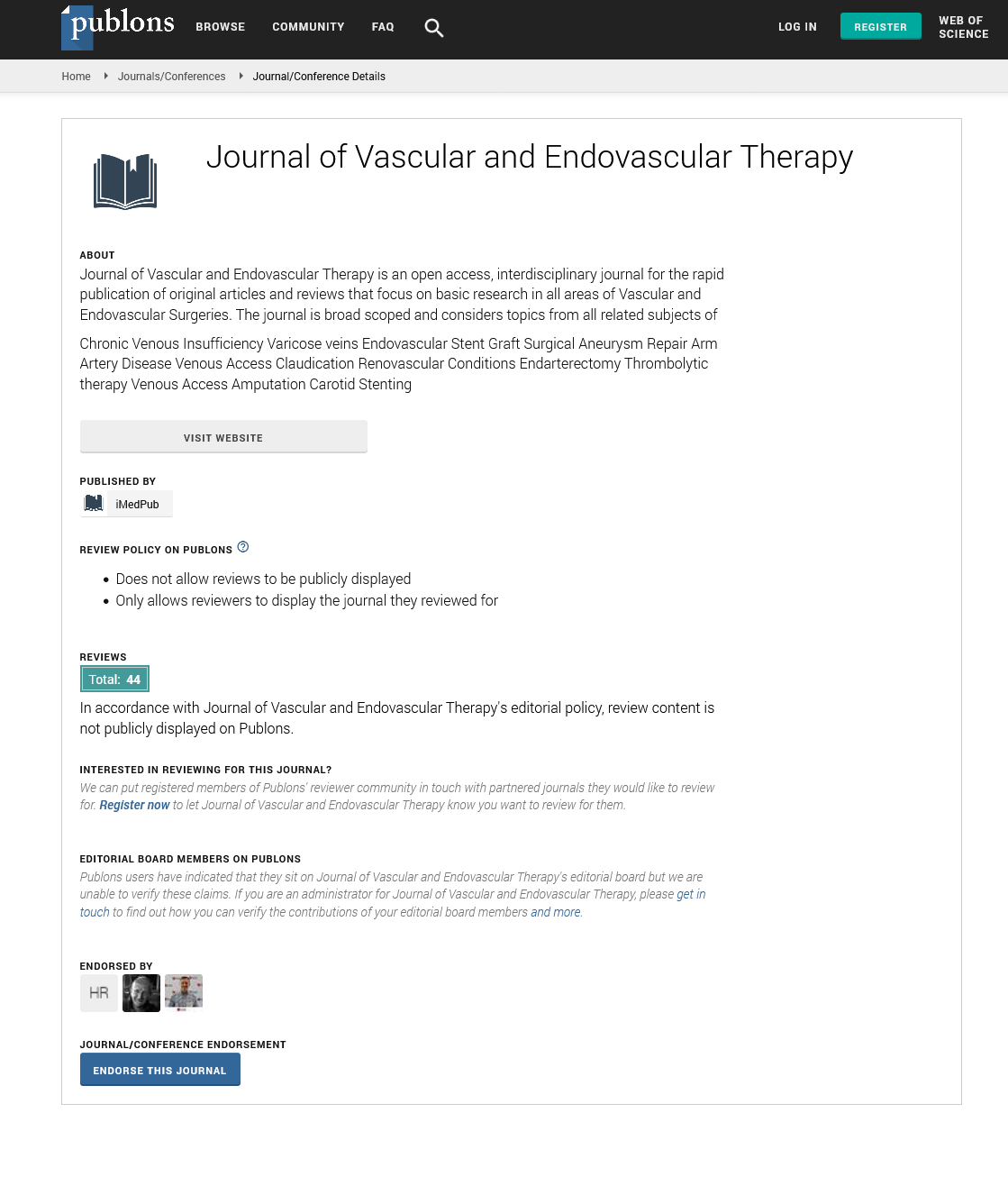Estimation of hemodynamics in human and artificial vessels with artificial circulatory model
3rd Edition of World Congress & Exhibition on Vascular Surgery
May 24-25, 2018 London, UK
Andrzej Polanczyk, Aleksandra Piechota Polanczyk, Martin Funovics, Christoph Domenig, Josif Nanobashvili, Christoph Neumayer and Ihor Huk
Medical University of Vienna, Austria Lodz University of Technology, Poland Jagiellonian University, Poland
Posters & Accepted Abstracts: J Vasc Endovasc Therapy
DOI: 10.21767/2573-4482-C1-003
Abstract
Introduction: A dedicated ex vivo computer controlled circulatory bioengineering reactor was designed and constructed to monitor the real time vascular tissue response under various physiological conditions. Methods: We designed and build dedicated artificial circulatory model (ACM) for computational projection of vessel structure under different flow conditions. Next, we analyzed flow through iliac arteries and silicon tubes supplied with the homemade fluid that mimic blood. Using ACM we analyzed mechanical behavior of vessels such as change of diameter and wall displacement. Accuracy of data collected with ACM was verified with medical data gathered from patients before an operation and reconstructed with 2D-speckle-tracking-technique (2DSTT). Results: The analysis of spatial configuration for silicon tubes indicated approximately 57% lower change of diameter compared to the iliac arteries. Meanwhile we observed approximately 2.3fold decrease in wall displacement for the silicon tubes compared to the iliac arteries. Moreover, there were no significant changes between experimental results and medical data. Conclusions: The approach presented in the manuscript may become a useful tool to introduce different types and spatial configurations of vessels for different hemodynamic conditions. By utilizing an ex vivo perfusion system in which ejection volume and frequency of pulsation can be varied independently, we have shown different mechanical response of tissue vascular grafts and silicon tubes. Recent Publications 1. Polanczyk A, Piechota Polanczyk A and Stefanczyk L (2017) A new approach for the pre-clinical optimization of a spatial configuration of bifurcated endovascular
prosthesis placed in abdominal aortic aneurysms. PLoS One doi: 10.1371/journal.pone.0182717. 2. Polanczyk A, Podyma M, Trebinski L, Chrzastek J, Zbicinski I and Stefanczyk L (2016) A novel attempt to standardize results of CFD simulations basing on spatial configuration of aortic stent-grafts. PLoS One doi: 10.1371/journal.pone.0153332. 3. Polanczyk A, Podyma M, Stefanczyk L, Szubert W and Zbicinski I (2015) A 3D model of thrombus formation in a stent-graft after implantation in the abdominal aorta. J Biomech. 48:425-431. 4. J Urbina, J A Sotelo, D Springmuller, C Montalba, K Letelier, C Tejos, et al. (2016) Realistic aortic phantom to study hemodynamics using MRI and cardiac catheterization in normal and aortic coarctation conditions. Journal of Magnetic Resonance Imaging: JMRI 44:683-97. 5. F Prandi, M Piola, M Soncini, C Colussi, Y D’Alessandra, E Penza, et al. (2015) Adventitial vessel growth and progenitor cells activation in an ex vivo culture system mimicking human saphenous vein wall strain after coronary artery bypass grafting. PloS One 10:e0117409
Biography
Andrzej Polanczyk is a Researcher and a Team Leader at the Lodz University of Technology (Poland). He earned a PhD in Medical Engineering in 2013. He participated in scientific grants in which he build the installation to simulate the blood flow through the abdominal section of the aorta. Recently he received a grant funded by the National Centre for Research and Development. His research areas comprise biomedical, chemical and, environmental engineering. Email:andrzej.polanczyk@gmail.com
Google Scholar citation report
Citations : 177
Journal of Vascular and Endovascular Therapy received 177 citations as per Google Scholar report
Journal of Vascular and Endovascular Therapy peer review process verified at publons
Abstracted/Indexed in
- Google Scholar
- Publons
- Geneva Foundation for Medical Education and Research
- Secret Search Engine Labs
Open Access Journals
- Aquaculture & Veterinary Science
- Chemistry & Chemical Sciences
- Clinical Sciences
- Engineering
- General Science
- Genetics & Molecular Biology
- Health Care & Nursing
- Immunology & Microbiology
- Materials Science
- Mathematics & Physics
- Medical Sciences
- Neurology & Psychiatry
- Oncology & Cancer Science
- Pharmaceutical Sciences


